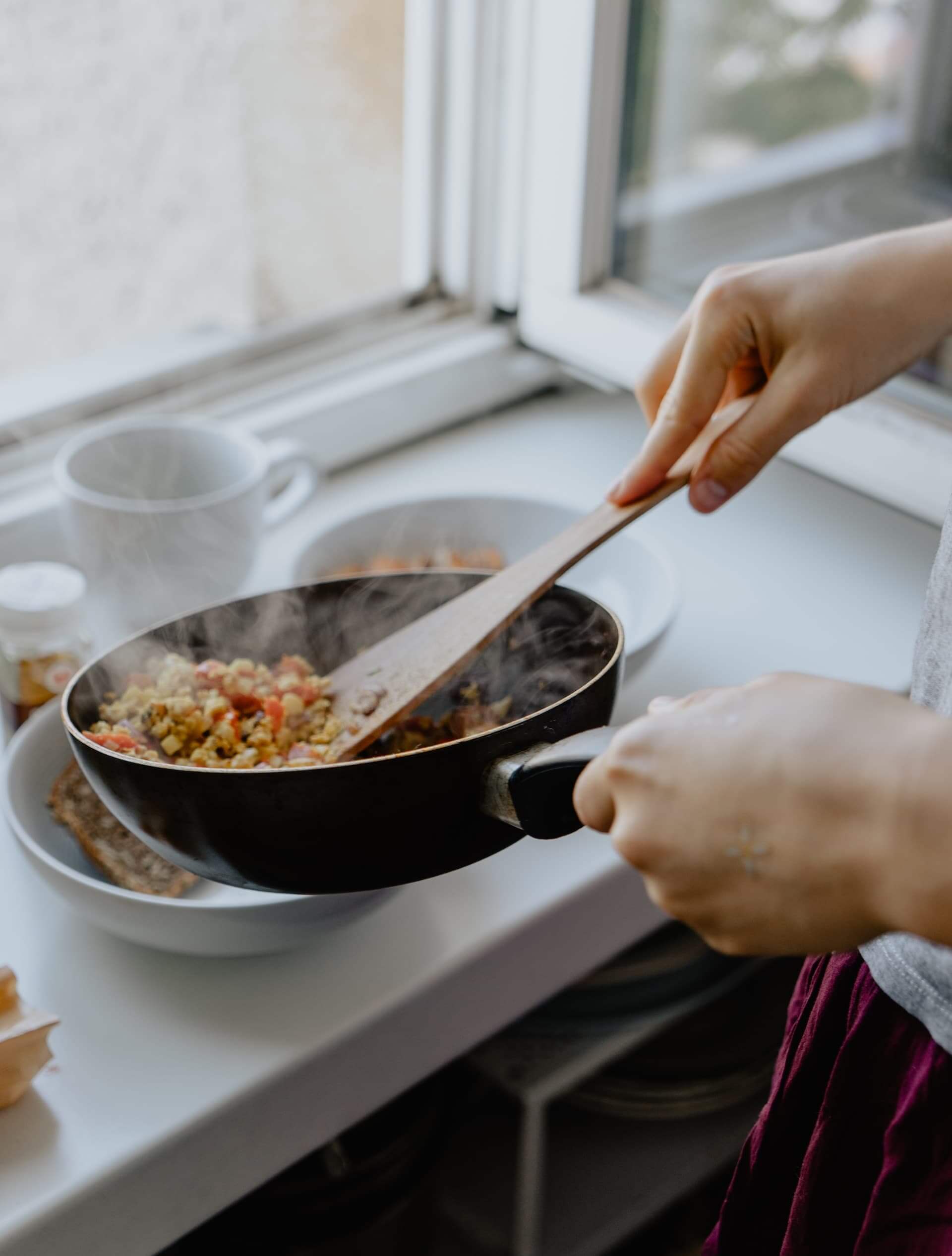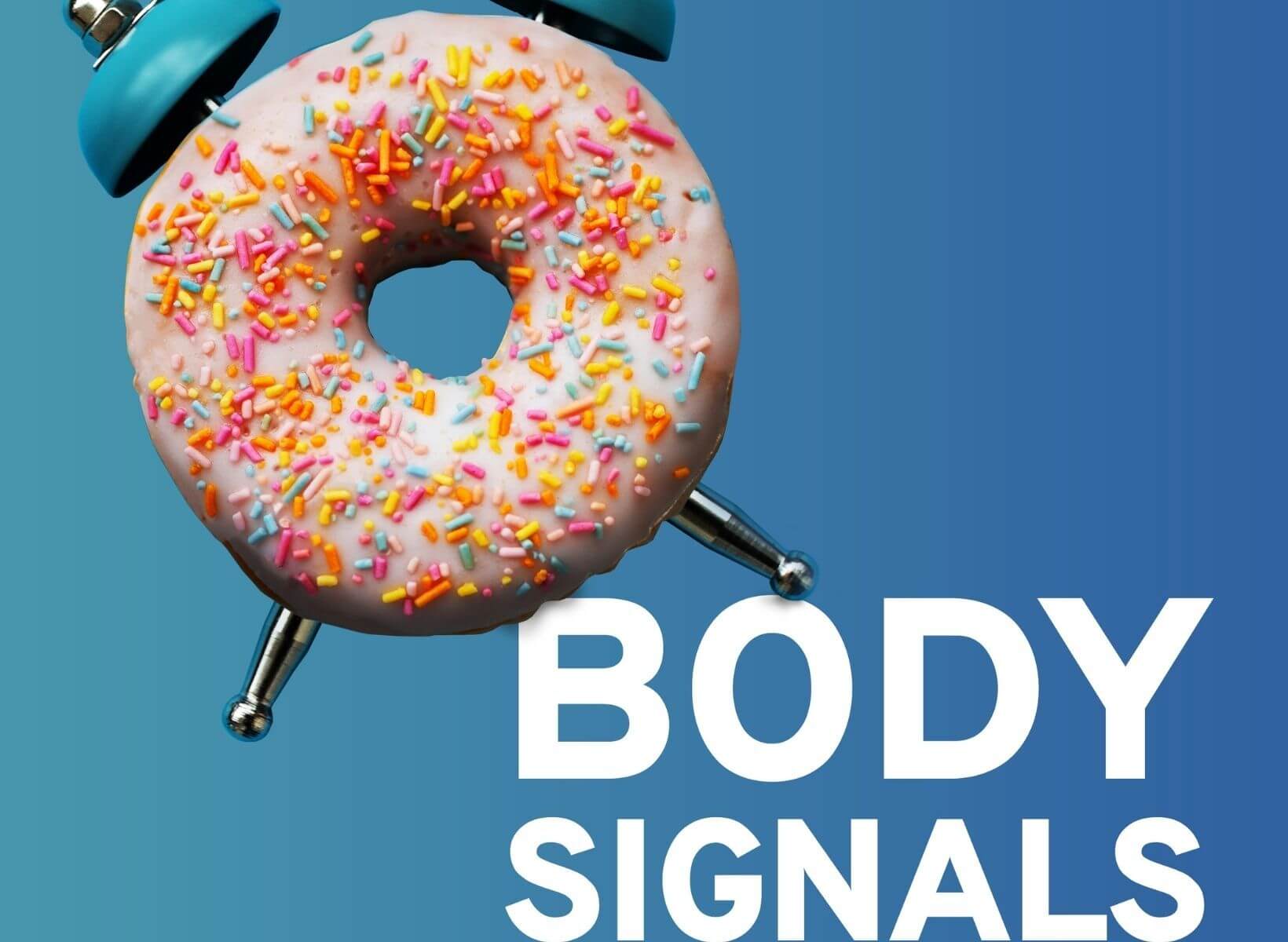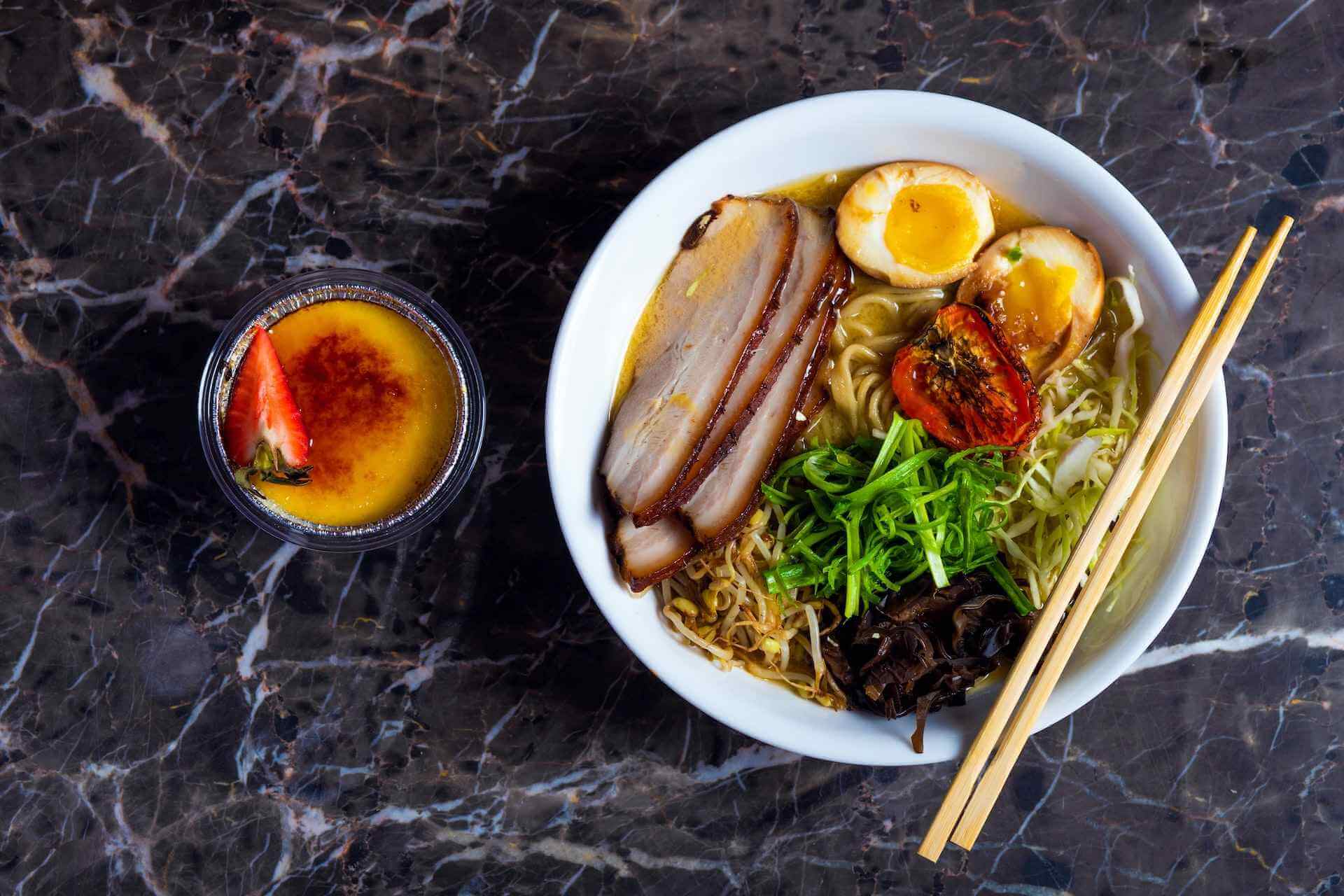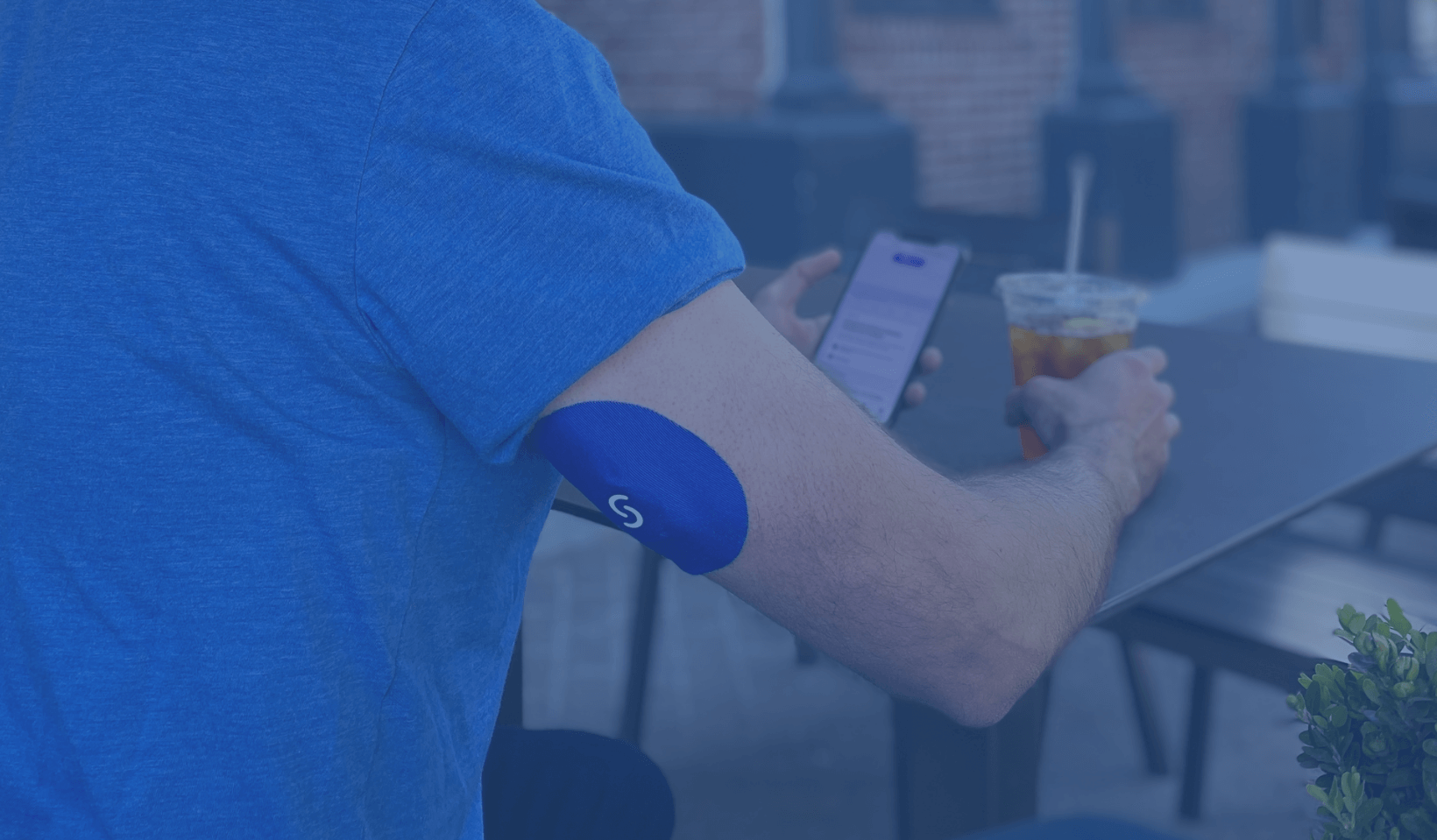Carbohydrates have earned a bad reputation in the diet world. From keto to carnivore, several diets encourage eliminating carbs. Carbs have been blamed for weight gain, obesity, diabetes, and other health conditions. But have carbs been labeled bad for no good reason?
Carbohydrates are your body’s preferred source of fuel, particularly for your brain. So eliminating them doesn’t do you any favors long-term, often leading to low energy, headaches, and brain fog. However, there is no need to avoid carbs; many carbohydrates are high in fiber and nutrients that should be included in a balanced diet.
Keep reading to learn more about why you should include carbs in your diet, plus ideas for high-carb meals and snacks.
What is a High Carb Meal?
A high-carb meal is one that includes half the calories or more from carbohydrates. Combining carbohydrates with a good portion of protein will increase fullness and satisfaction and keep you energized for longer. High-fiber carbs will increase the effectiveness of a high-protein, high-carb meal even more so. Fiber helps slow digestion and prevent unwanted spikes in blood sugar, keeping blood sugar levels stable.
10 High-Carb Foods That Are Good for You
1. Oats
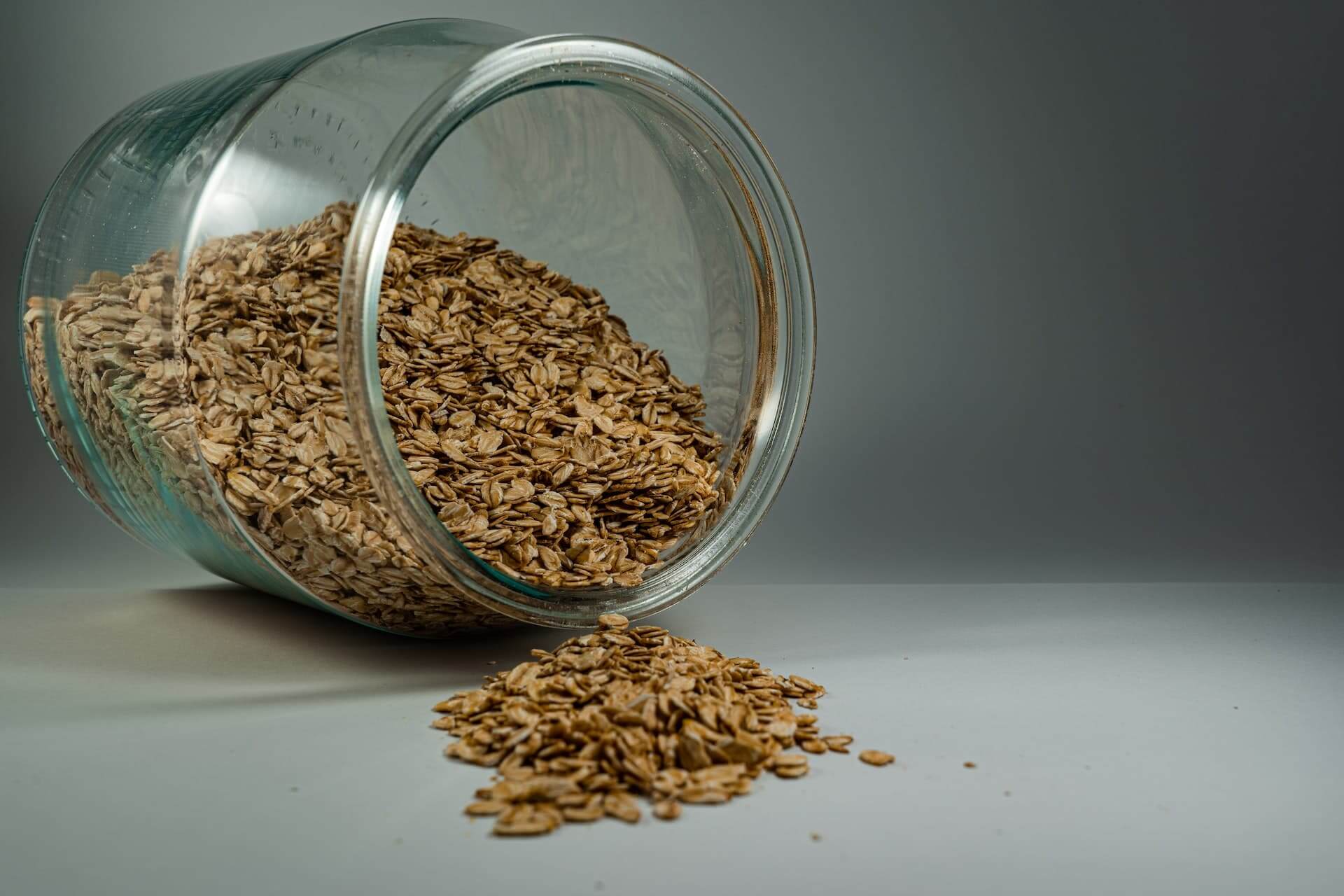
Oats are nutrient-packed whole grains full of fiber, vitamins, minerals, and antioxidants.
Raw oats are made up of 70 percent carbohydrates. They also provide some protein and dietary fat. One cup of old-fashioned oats has 54 grams of carbs and 8 grams of fiber. Oats contain a type of fiber called beta-glucan, which has been associated with lowering cholesterol and reducing heart disease.1
Including oats in your diet may help to regulate blood sugar levels. Eating oats may even lower blood sugar levels in people who have diabetes.2
Oats have a low glycemic index (GI) score of 55. The GI score measures how quickly a food will raise blood sugar levels when consumed alone.
The fiber in oats is incredibly filling, which may help regulate appetite. Replacing ready-to-eat cereals with oatmeal may lead to a healthier weight.3,4
2. Buckwheat
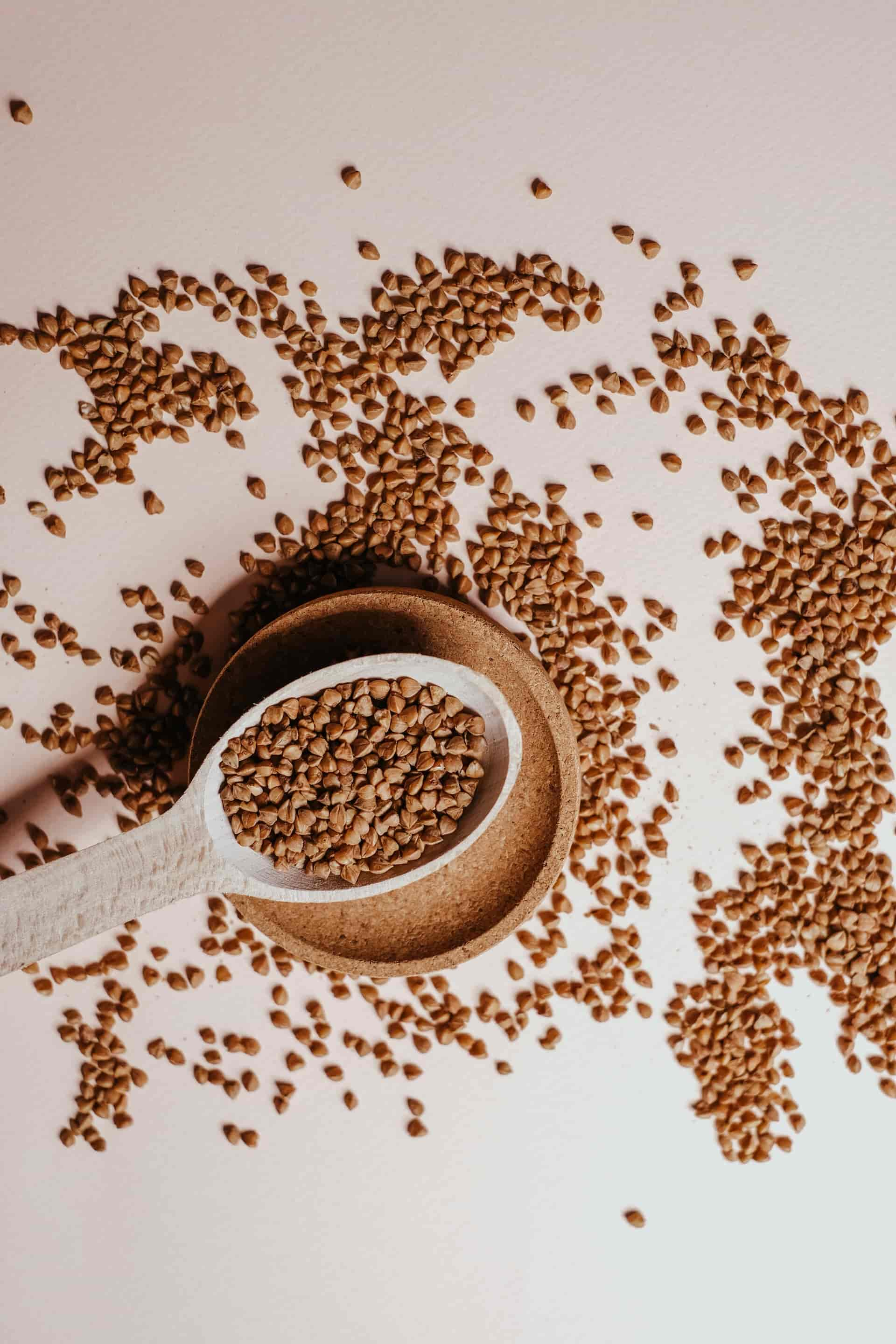
Buckwheat is highly nutritious and contains more antioxidants and minerals than many grains. Buckwheat is considered a pseudocereal, is unrelated to wheat, and does not contain gluten. Including buckwheat in your diet may benefit your heart health and improve blood sugar regulation.6,7,8
Raw buckwheat contains 75 grams of carbs. A 100-gram serving of cooked buckwheat contains about 20 grams of carbs. Its glycemic index score is between 30 and 35 (depending on the origin of the buckwheat), which is lower than wheat and other cereals.7
3. Quinoa

Quinoa is a highly nutritious carbohydrate with many minerals and plant compounds. It consists of 70 percent carbohydrates, plus it provides protein and fiber.
Quinoa may help improve blood sugar management and support heart health. Quinoa is also high in protein and fiber, so it may be useful for weight loss, as both of these nutrients can help regulate appetite by keeping you feeling full for longer.5
Quinoa has a low GI index score of 53.
4. Black beans
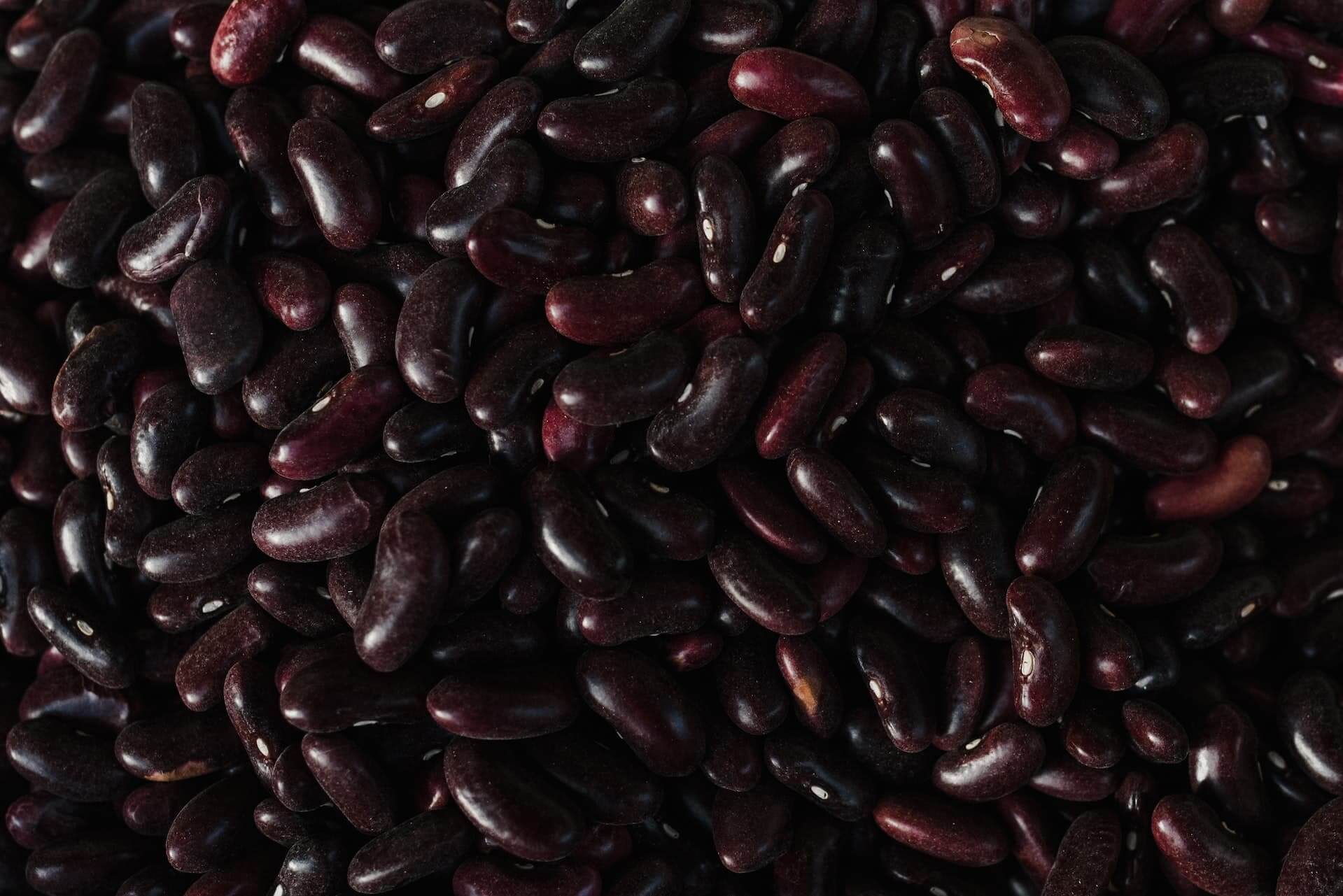
Black beans offer several health benefits, generally related to their high antioxidant and fiber content. These legumes may help lower cholesterol, blood sugar, and blood pressure.9,10
Black beans are a high-carb food, with a one-cup serving of boiled, unsalted black beans providing 45 grams of carbs and 15 grams of fiber. They also contain 15 grams of plant-based protein.
Black beans have a GI value within the 29 to 38 range, so they are considered a low-GI food. This means they cause a small and steady rise in your blood sugar.
Studies show that consuming meals containing as little as 1/2 cup (86 grams) of black beans may reduce the GI of the meal, helping control blood sugar levels up to 120 minutes after eating.11
5. Lentils
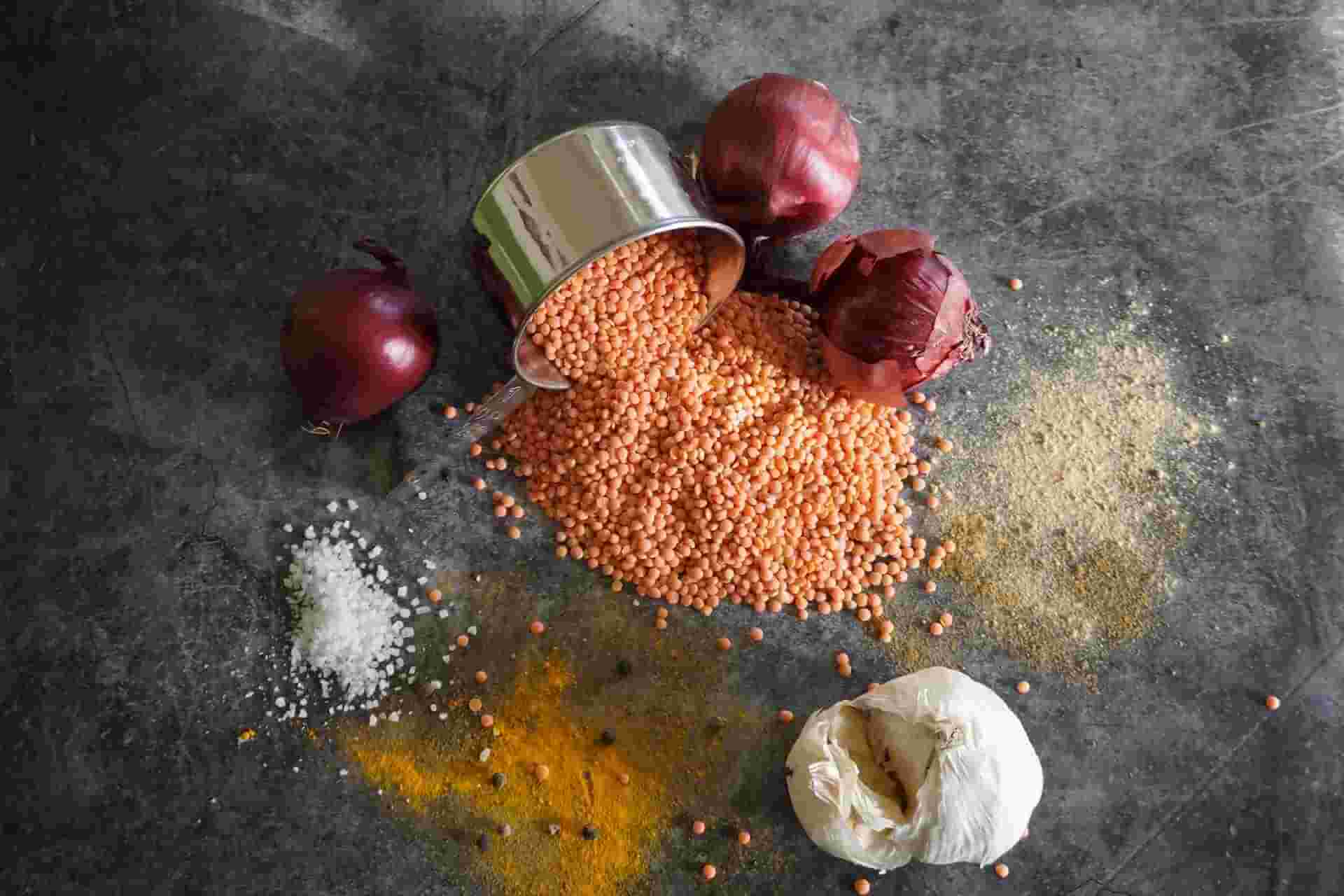
Lentils are an incredibly affordable and nutritious high-carb food. One cup of lentils provides about 40 grams of carbs, 16 grams of fiber, and 18 grams of protein. They are also a good source of B vitamins, magnesium, zinc, and potassium.
These legumes are high in fiber, which supports a healthy digestive system and regular bowel movements. Eating lentils can increase your stool weight and improve your overall gut function.24
Lentils also contain beneficial plant compounds called phytochemicals, many of which protect against chronic diseases such as heart disease and type 2 diabetes.25
Lentils have a GI score ranging from 18 to 52 depending on the type of lentils and how they are prepared. Boiled red lentils tend to have a lower GI, while canned green lentils tend to have a higher GI.
{{mid-cta}}
6. Chickpeas
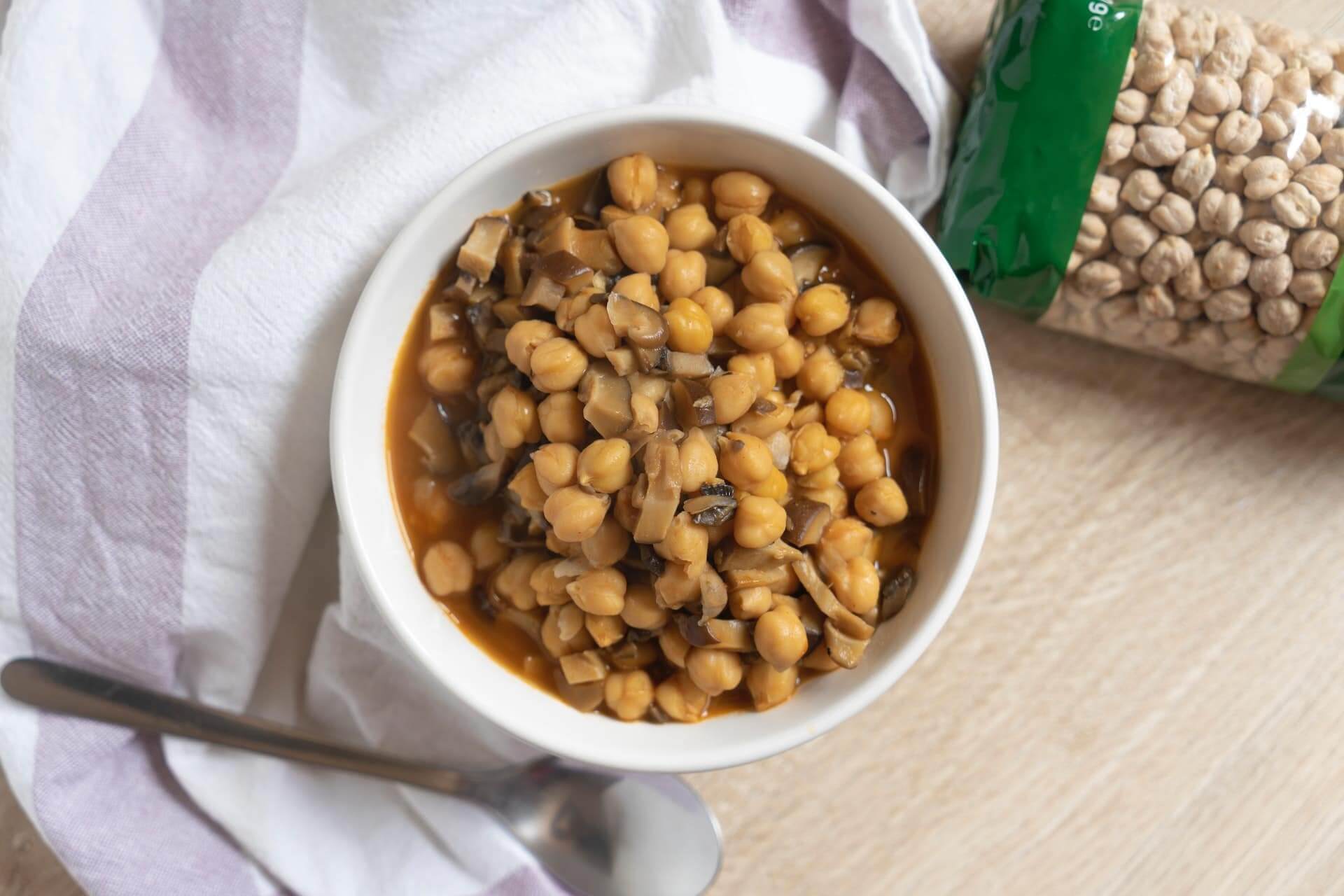
Chickpeas, also known as garbanzo beans, are from the legume family. Chickpeas are a super nutritious high-carb food packed with vitamins, minerals, fiber, and protein.
One cup of cooked chickpeas contains 45 grams of carbs, 14.5 grams of protein, and 12.5 grams of fiber.
The fiber and protein in chickpeas may help you feel more full at meal times, causing you to reduce your overall calorie intake. This can help with weight management.12
Chickpeas have a low glycemic index score of 28 and are a great source of fiber and protein. These are all properties that support healthy blood sugar management.13
Chickpeas may also help prevent some chronic illnesses, including heart disease, cancer, and type 2 diabetes.13
7. Sweet potatoes

Sweet potatoes are an excellent source of vitamin A, vitamin C, and potassium. They’re packed with antioxidants that help neutralize harmful free radicals in your cells to protect against chronic disease.14
One-half cup of mashed, cooked sweet potatoes (skin on) offers roughly 21 grams of carbs, which consists of starch, sugar, and fiber.
Sweet potatoes' glycemic index (GI) score depends on how long they are cooked. The GI score decreases with the length of time cooked. For example, when sweet potatoes are boiled for 30 minutes, they have a low GI value of about 46, but when boiled for just 8 minutes, they have a medium GI of 61.
8. Bananas
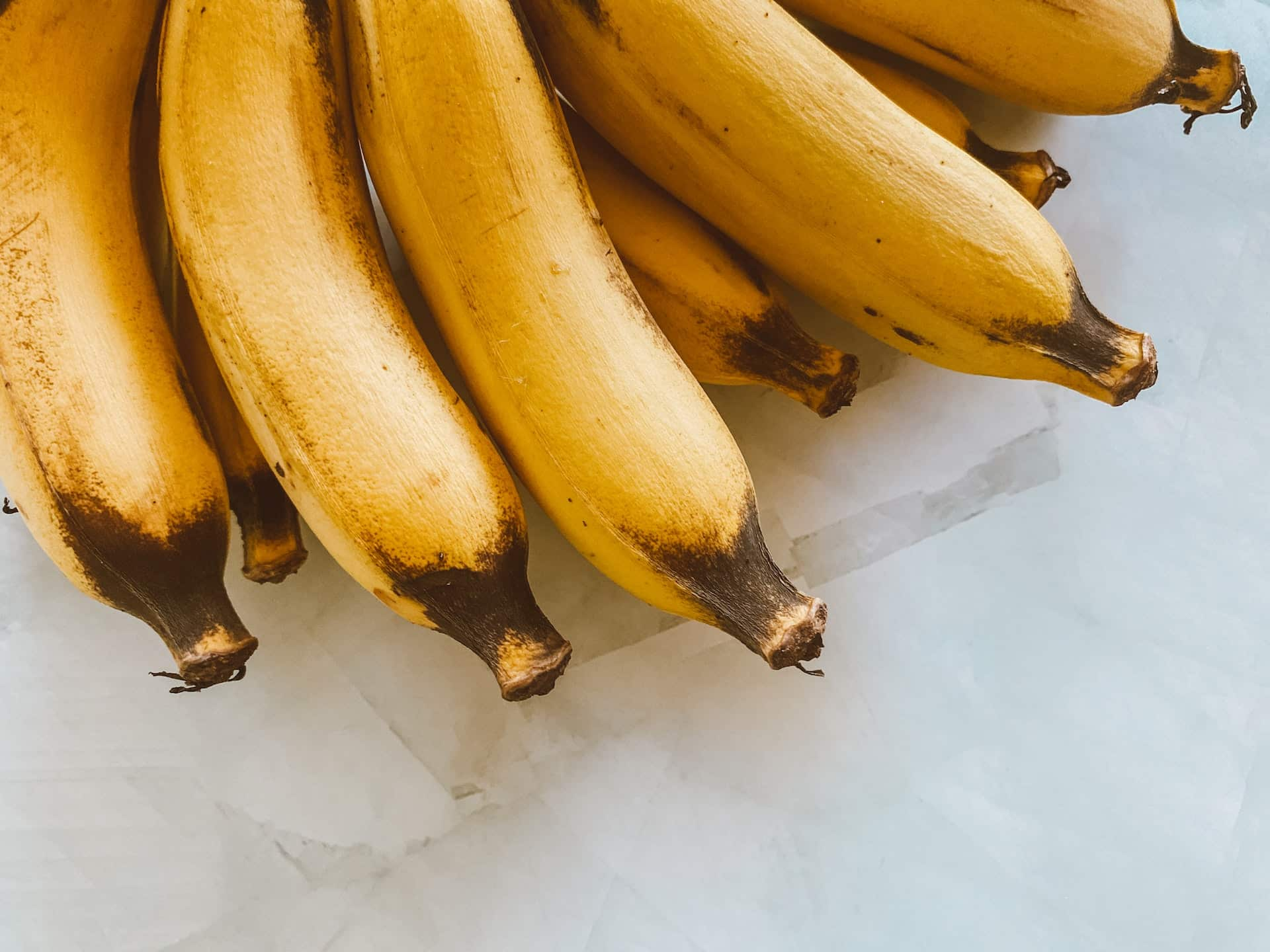
One large banana provides around 31 grams of carbs, both from starches and sugars. Bananas are high in potassium and vitamins B6 and C and contain several beneficial plant compounds.
This potassium-rich food may lower blood pressure, improve heart health, and support healthy blood sugar levels.16
Less ripe bananas contain more resistant starch and pectin, which may improve digestive health. Less ripe bananas are also lower in sugar, which may help improve blood sugar control.17
Ripe bananas have a low GI score of 51, while slightly under-ripe bananas are even lower at 42.
9. Kidney beans
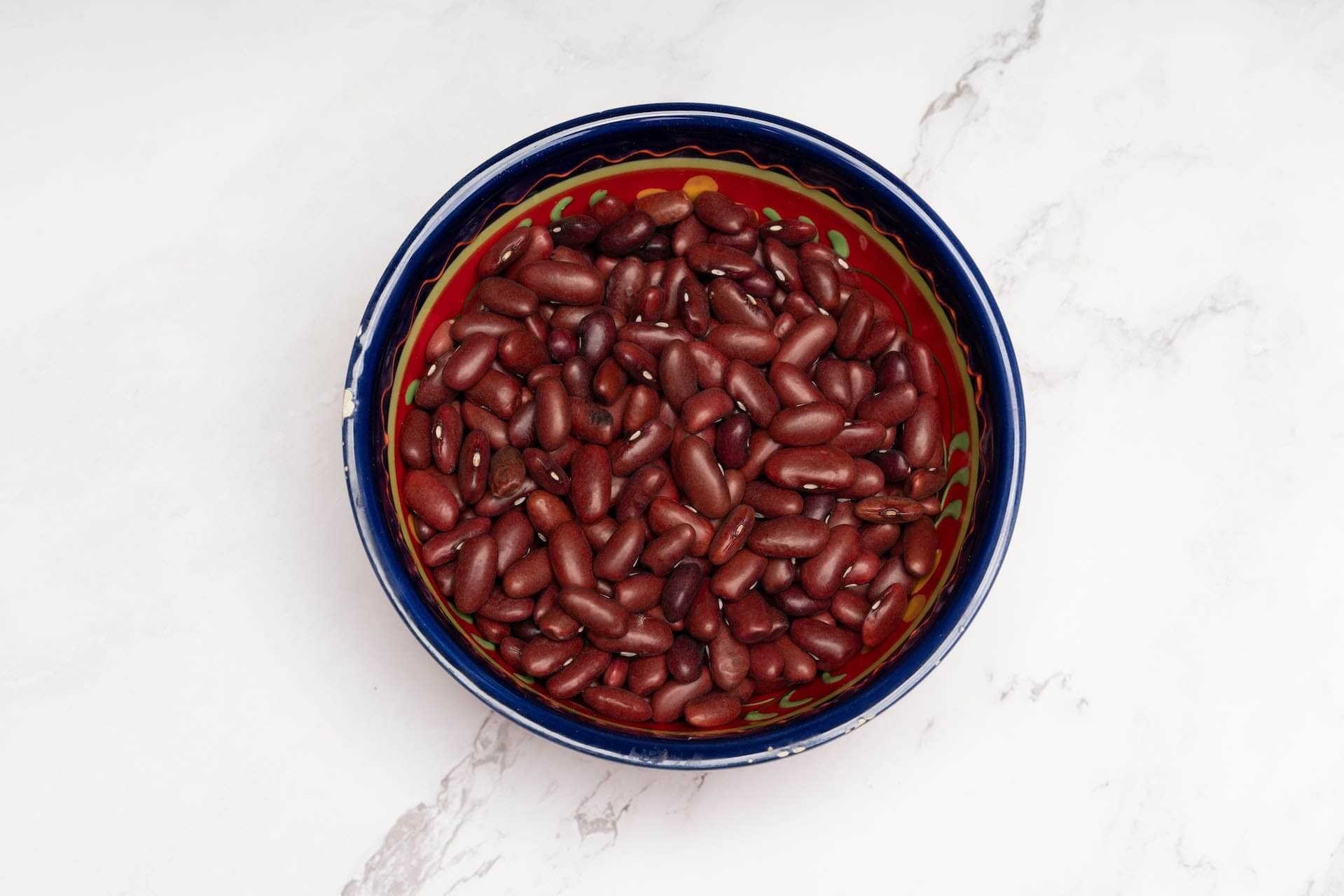
Cooked kidney beans have around 21.5 grams of carbs per 100 grams from starches and fiber. This legume is also high in protein, providing 24 grams of protein per 100 grams.
Kidney beans are a good source of many vitamins, minerals, and plant compounds. They’re also rich in antioxidants, including anthocyanins and isoflavones.
Potential health benefits of kidney beans include improved blood sugar control and a lower risk of colon cancer.22,23
With a GI score of 24, kidney beans are a versatile low-GI food.
10. Blueberries
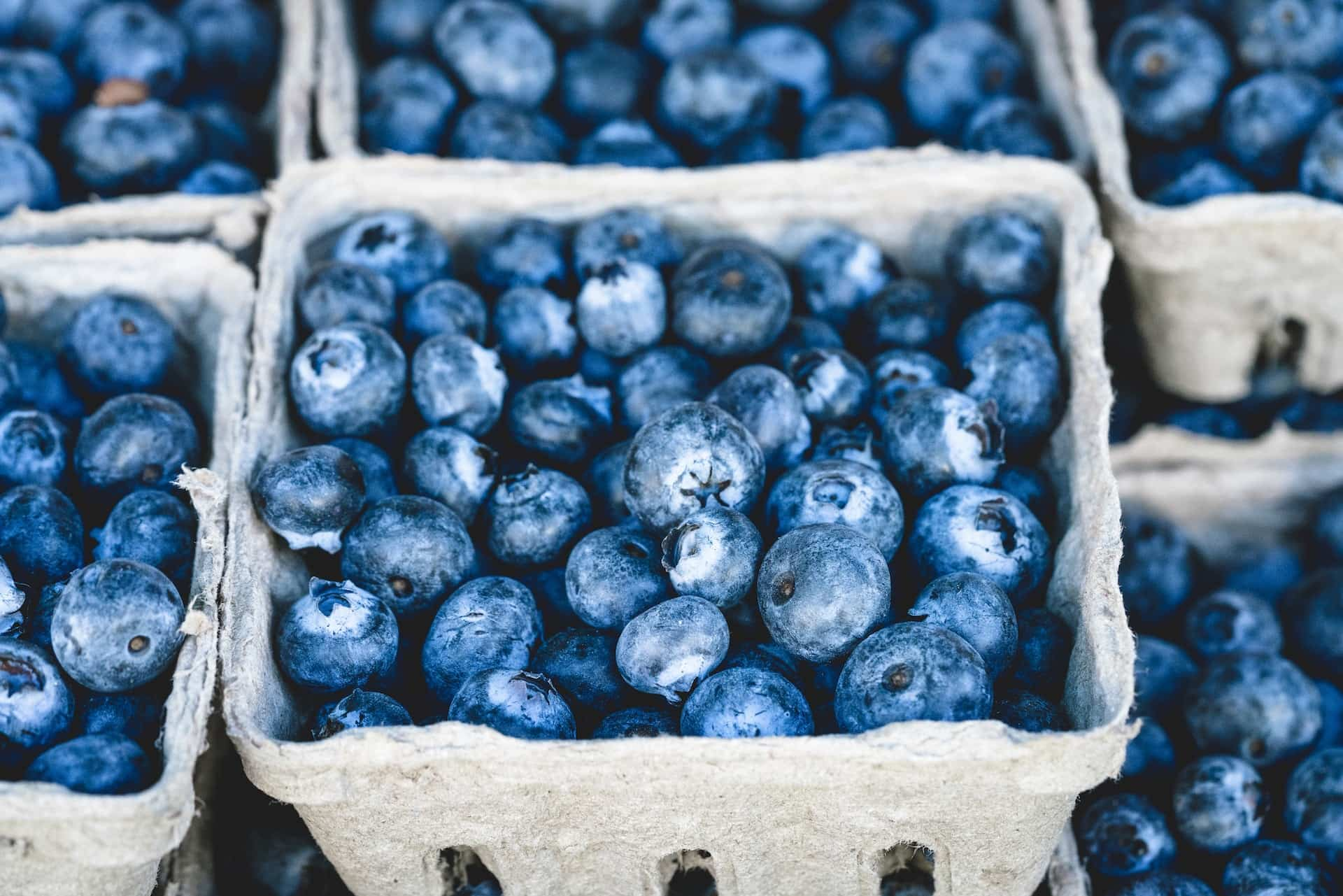
Blueberries are often called a “superfood.” These small berries pack a big punch and are loaded with nutrients. Blueberries contain many vitamins, minerals, and antioxidants, and they can help protect against oxidative damage.18,19
They may also help lower blood pressure, prevent heart disease, improve memory, aid exercise recovery, and more.20,21
Blueberries provide about 15 grams of carbs per 100-gram serving. The GI score of blueberries is 51, which is considered a low-GI score.
9 High Carb Recipes to Keep Your Energy Levels High
- Warm lentil and halloumi salad
This flavorful salad is the perfect meatless winter meal to fill you up. It’s packed with carbohydrates to give you energy, plus vitamins, minerals, fiber, and protein that support heart and gut health. The protein in fiber in this meal help manage appetite and keep blood sugar levels stable. Each serving contains 35 grams of carbs and 37 grams of protein.
Serves 2
- Bean, pea, and lentil salad
This affordable recipe is packed with energy-boosting carbohydrates and plant-based protein. It’s high in fiber, vitamins, and minerals (B vitamins, magnesium, zinc, and potassium) and will keep you feeling full for hours. One serving provides 46 grams of carbs and 20 grams of protein.
Makes 8 servings.
- Sweet potato and corn chowder
This super easy recipe is high in carbs and nutrients. Sweet potatoes provide powerful antioxidants in the form of vitamins A and C. This chowder is also high in fiber which increases fullness and supports digestive health. Each serving provides 40 grams of carbs and 6 grams of protein.
Serves 6
- Spinach, lentil, and feta bruschetta
Try a new spin on bruschetta with this protein and carb-packed recipe. This meal contains plenty of micronutrients from spinach, lentils, and tomatoes. Each serving provides about 55 grams of carbs and 20 grams of protein.
Serves 4
- Quinoa + veggie salad
This easy quinoa veggie salad takes 20 minutes to prepare and will satisfy all your senses. It’s bursting with flavor, texture, and nutrition. One cup provides 40 grams of carbs and 10 grams of protein.
- Oaty apple muffins
These oatmeal apple muffins are packed with fiber and nutrients. Pumpkin seeds and chia seeds add even more fiber and protein. Try packing into lunch boxes for healthy, eat-later snacks. One muffin provides 5 grams of protein and 33 grams of carbs.
Makes 12
- Lentil and brown rice salad
This vegan lentil salad is a hearty recipe that keeps you fueled up for your busy day. Brown rice, carrots, tomatoes, and cilantro pack this fresh and colorful salad full of fiber and micronutrients. Each serving contains 31 grams of carbs and 8 grams of protein.
Serves 8
- Roasted chickpea snack mix
This chickpea snack mix is high in protein and fiber and packed with nutritious ingredients that energize you through any adventure. One half-cup serving provides 36 grams of carbs, 6 grams of fiber, and 10 grams of protein.
Meal Ideas for Every Meal of the Day to Get Carbs Right
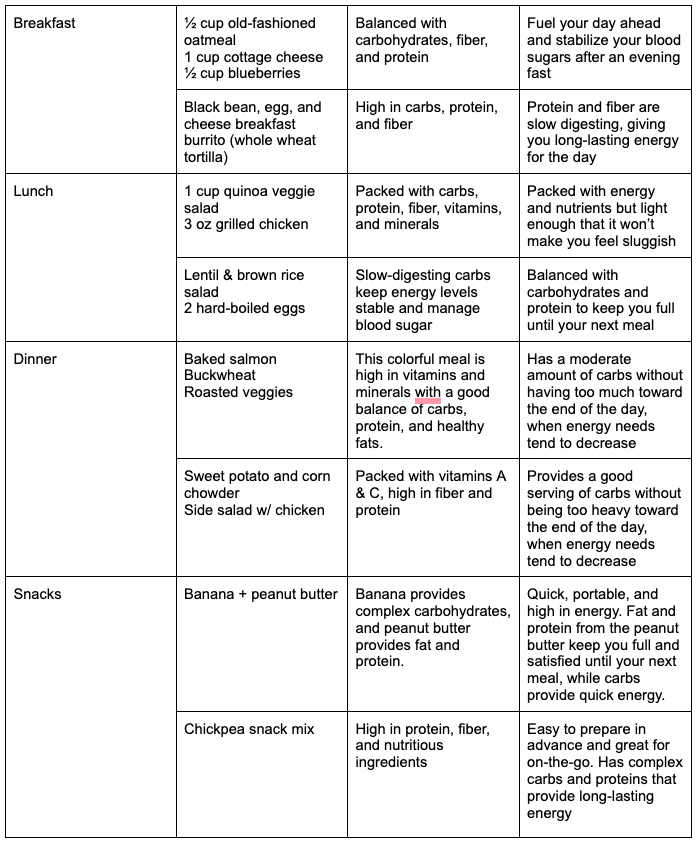
Bottomline: High-Carb Meals for Weight Loss
You don't have to eliminate carbohydrates from your diet for weight loss. Instead, focus on eating complex carbohydrates like whole grains, legumes, and starchy vegetables like potatoes (yes, potatoes). These ingredients are high in nutrients like fiber and can help you feel full for longer periods. Increasing fullness can regulate appetite and reduce overall caloric intake.
Learn More About How to Achieve Healthy and Balanced Nutrition with Signos’ Expert Advice
Signos is a great resource for expert advice on nutrition and healthy eating. Signos has a team of registered dietitians who compile evidence-based nutrition information to help you improve your health and wellness. Check out the resources here.
Signos CGM empowers you to improve your health by keeping track of your diet, exercise, sleep habits, and blood sugar. Knowledge is power, and a CGM can give you specific information about how your habits affect your health.
Find out if Signos is a good fit for you by taking a quick quiz.
- Item 1
- Item 2
- item 3
Topics discussed in this article:
References
- Sima P, Vannucci L, Vetvicka V. β-glucans and cholesterol (Review). Int J Mol Med. 2018;41(4):1799-1808. doi:10.3892/ijmm.2018.3411
- Hou Q, Li Y, Li L, et al. The Metabolic Effects of Oats Intake in Patients with Type 2 Diabetes: A Systematic Review and Meta-Analysis. Nutrients. 2015;7(12):10369-10387. Published 2015 Dec 10. doi:10.3390/nu7125536
- Rebello CJ, O'Neil CE, Greenway FL. Dietary fiber and satiety: the effects of oats on satiety. Nutr Rev. 2016;74(2):131-147. doi:10.1093/nutrit/nuv063
- Rebello CJ, Johnson WD, Martin CK, et al. Instant Oatmeal Increases Satiety and Reduces Energy Intake Compared to a Ready-to-Eat Oat-Based Breakfast Cereal: A Randomized Crossover Trial. J Am Coll Nutr. 2016;35(1):41-49. doi:10.1080/07315724.2015.1032442
- Simnadis TG, Tapsell LC, Beck EJ. Physiological Effects Associated with Quinoa Consumption and Implications for Research Involving Humans: a Review. Plant Foods Hum Nutr. 2015;70(3):238-249. doi:10.1007/s11130-015-0506-5
- Giménez-Bastida JA, Zieliński H. Buckwheat as a Functional Food and Its Effects on Health. J Agric Food Chem. 2015;63(36):7896-7913. doi:10.1021/acs.jafc.5b02498
- Różańska D, Mikoś K, Regulska-Ilow B. Assessment of the glycemic index of groats available on the Polish food market. Rocz Panstw Zakl Hig. 2020;71(1):81-87. doi:10.32394/rpzh.2020.0101
- Li L, Lietz G, Seal C. Buckwheat and CVD Risk Markers: A Systematic Review and Meta-Analysis. Nutrients. 2018;10(5):619. Published 2018 May 15. doi:10.3390/nu10050619
- Chávez-Mendoza C, Sánchez E. Bioactive Compounds from Mexican Varieties of the Common Bean (Phaseolus vulgaris): Implications for Health. Molecules. 2017;22(8):1360. Published 2017 Aug 17. doi:10.3390/molecules22081360
- Reverri EJ, Randolph JM, Steinberg FM, Kappagoda CT, Edirisinghe I, Burton-Freeman BM. Black Beans, Fiber, and Antioxidant Capacity Pilot Study: Examination of Whole Foods vs. Functional Components on Postprandial Metabolic, Oxidative Stress, and Inflammation in Adults with Metabolic Syndrome. Nutrients. 2015;7(8):6139-6154. Published 2015 Jul 27. doi:10.3390/nu7085273
- Winham DM, Hutchins AM, Thompson SV. Glycemic Response to Black Beans and Chickpeas as Part of a Rice Meal: A Randomized Cross-Over Trial. Nutrients. 2017;9(10):1095. Published 2017 Oct 4. doi:10.3390/nu9101095
- Zafar TA, Kabir Y. Chickpeas suppress postprandial blood glucose concentration, and appetite and reduce energy intake at the next meal. J Food Sci Technol. 2017;54(4):987-994. doi:10.1007/s13197-016-2422-6
- Wallace TC, Murray R, Zelman KM. The Nutritional Value and Health Benefits of Chickpeas and Hummus. Nutrients. 2016;8(12):766. Published 2016 Nov 29. doi:10.3390/nu8120766
- Holscher HD. Dietary fiber and prebiotics and the gastrointestinal microbiota. Gut Microbes. 2017;8(2):172-184. doi:10.1080/19490976.2017.1290756
- Tanaka M, Ishiguro K, Oki T, Okuno S. Functional components in sweet potato and their genetic improvement. Breed Sci. 2017;67(1):52-61. doi:10.1270/jsbbs.16125
- Stone MS, Martyn L, Weaver CM. Potassium Intake, Bioavailability, Hypertension, and Glucose Control. Nutrients. 2016;8(7):444. Published 2016 Jul 22. doi:10.3390/nu8070444
- Maier TV, Lucio M, Lee LH, et al. Impact of Dietary Resistant Starch on the Human Gut Microbiome, Metaproteome, and Metabolome. mBio. 2017;8(5):e01343-17. Published 2017 Oct 17. doi:10.1128/mBio.01343-17
- Rodriguez-Mateos A, Cifuentes-Gomez T, Tabatabaee S, Lecras C, Spencer JP. Procyanidin, anthocyanin, and chlorogenic acid contents of highbush and lowbush blueberries. J Agric Food Chem. 2012;60(23):5772-5778. doi:10.1021/jf203812w
- Mazza G, Kay CD, Cottrell T, Holub BJ. Absorption of anthocyanins from blueberries and serum antioxidant status in human subjects. J Agric Food Chem. 2002;50(26):7731-7737. doi:10.1021/jf020690l
- Cassidy A, Mukamal KJ, Liu L, Franz M, Eliassen AH, Rimm EB. High anthocyanin intake is associated with a reduced risk of myocardial infarction in young and middle-aged women. Circulation. 2013;127(2):188-196. doi:10.1161/CIRCULATIONAHA.112.122408
- Willis LM, Shukitt-Hale B, Joseph JA. Recent advances in berry supplementation and age-related cognitive decline. Curr Opin Clin Nutr Metab Care. 2009;12(1):91-94. doi:10.1097/MCO.0b013e32831b9c6e
- Bielefeld D, Grafenauer S, Rangan A. The Effects of Legume Consumption on Markers of Glycaemic Control in Individuals with and without Diabetes Mellitus: A Systematic Literature Review of Randomised Controlled Trials. Nutrients. 2020;12(7):2123. Published 2020 Jul 17. doi:10.3390/nu12072123
- Zhu B, Sun Y, Qi L, Zhong R, Miao X. Dietary legume consumption reduces risk of colorectal cancer: evidence from a meta-analysis of cohort studies. Sci Rep. 2015;5:8797. Published 2015 Mar 5. doi:10.1038/srep08797
- Graf D, Monk JM, Lepp D, et al. Cooked Red Lentils Dose-Dependently Modulate the Colonic Microenvironment in Healthy C57Bl/6 Male Mice. Nutrients. 2019;11(8):1853. Published 2019 Aug 9. doi:10.3390/nu11081853
- Turco I, Bacchetti T, Morresi C, Padalino L, Ferretti G. Polyphenols and the glycaemic index of legume pasta. Food Funct. 2019;10(9):5931-5938. doi:10.1039/c9fo00696f

